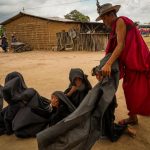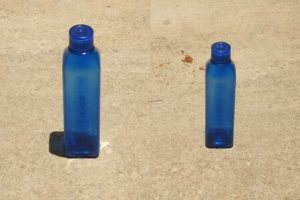() — A decade ago, the Large Hadron Collider of the European Organization for Nuclear Research (CERN), the most powerful particle accelerator on Earth, confirmed the existence of a subatomic particle called the Higgs boson, considered a cornerstone of the universe. that can be traced back to the “Big Bang”, billions of years ago.
Now physicists at CERN on the Swiss-French border will restart the collider in an effort to understand more about the Higgs boson, other subatomic particles, and the mysteries of dark matter, an elusive, invisible substance that cannot be seen. it does not absorb, reflect or emit light.
The Large Hadron Collider is a ring 27 kilometers in circumference and is located deep in the Alps. It is composed of superconducting magnets cooled to -271.3°C, a temperature lower than that of outer space. The collider causes small particles to collide to allow scientists to observe them and analyze what is inside them.
Proton beams began circulating through the accelerator complex in April, when it was turned on after being closed for three years of maintenance and upgrades.
This Tuesday, scientists at CERN start collecting data for its experiments, and the Large Hadron Collider will operate 24 hours a day for almost four years. This is the third time the massive machine has been put to work, with greater precision and discovery potential than ever thanks to upgraded data-reading and selection systems, as well as new detection systems and computing infrastructure. .
“When we investigate we expect to find something unexpected, a surprise. That would be the best result. But of course the answer is in nature’s hands, and it depends on how nature answers open questions in fundamental physics,” Fabiola said. Gianotti, director general of CERN, in a video posted on her website.
“We are looking for answers to questions related to dark matter, why the Higgs boson is so light, and many other open questions.”
Understanding the Higgs boson
Physicists François Englert and Peter Higgs first theorized the existence of the Higgs boson in the 1960s. The Standard Model of Physics lays the foundation for how elementary particles and forces interact in the universe. However, the theory has failed to explain how the particles actually acquire their mass. Particles, or bits of matter, vary in size and can be larger or smaller than atoms. Electrons, protons, and neutrons, for example, are the subatomic particles that make up an atom. Scientists now believe that the Higgs boson is the particle that gives mass to all matter.
In 2013, a year after the particle’s discovery, Englert and Higgs won a Nobel Prize for their visionary prediction. But there is still much that is unknown about the Higgs boson, and unlocking its secrets could help scientists understand the universe at its smallest scale and some of the cosmos’ greatest mysteries.
The Large Hadron Collider, opened in 2008, is the only place in the world where the Higgs boson can be produced and studied in detail. the third test was launched successfully at 10:47 a.m. ET on Tuesday.
In the latest round of experiments, CERN scientists will study the properties of matter under extreme conditions of temperature and density, as well as seek explanations for dark matter and other new phenomena, either through direct searches or, indirectly, through precise measurements of the properties of known particles.
“Although all the results obtained so far are consistent with the Standard Model, there is still a lot of room for new phenomena beyond what this theory predicts,” said CERN theorist Michelangelo Mangano. in a press release.
Dark matter is thought to make up most of the matter in the universe and has previously been detected for its ability to create gravitational distortions in outer space.
“The Higgs boson itself may point to new phenomena, including some that could be responsible for dark matter in the universe,” said Luca Malgeri, a spokesman for the CMS (Compact Muon Solenoid), one of the Big Four experiments in the Large Hadron Collider, which is built around a huge electromagnet.
— Sara Spary and Nick Thompson contributed reporting.










![[Img #74662]](https://thelatestnews.world/wp-content/uploads/2024/12/Organisms-with-the-shortest-life-150x150.jpg)


![[Img #74662]](https://thelatestnews.world/wp-content/uploads/2024/12/Organisms-with-the-shortest-life-300x200.jpg)

Add Comment